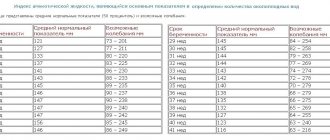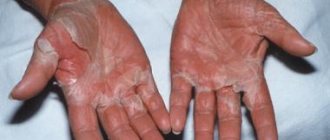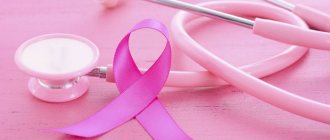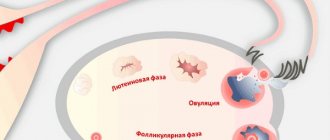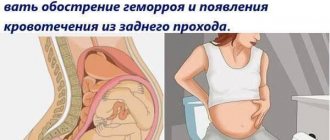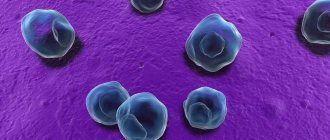Doctors have long puzzled over the causes of female malaise before menstruation. Some healers associated it with the phases of the moon, others with the area in which the woman lived.
The girl’s condition before her period remained a mystery for a long time. Only in the twentieth century the veil of secrecy was lifted a little.
PMS is a mix of 150 different physical and mental symptoms. To one degree or another, about 75% of women experience manifestations of premenstrual syndrome.
How long does PMS last for girls? Unpleasant symptoms begin to appear 2-10 days before the start of menstruation, and disappear with the appearance of the “red” days of the calendar.
Interesting facts about PMS
- Crime chronicle. PMS is not only frayed nerves and broken plates. Most road accidents, crimes, and thefts committed by women occurred between the 21st and 28th days of the menstrual cycle.
- Shopping therapy. According to research, a few days before their period, women are most susceptible to the temptation to buy as much as possible.
- Women engaged in mental work and residents of large cities are more susceptible to symptoms of PMS.
- The term PMS was first used by Robert Frank, an obstetrician-gynecologist from England.
Does PMS depend on a woman's age?
In the course of numerous observations, it was revealed that women aged 25-30 years suffer most from the pathology. Of course, severe internal diseases, bad habits, poor nutrition, and negative tendencies can be provocateurs.
As a rule, women with a weak nervous system, vulnerable and unstable to stress, who take everything to heart are susceptible to PMS.
According to the hypothesis, the occurrence of PMS can be affected by:
- diseases of the endocrine system;
- violation of the daily routine;
- poor nutrition
- binge eating;
- emotional stress;
- physical fatigue, heavy lifting.
Symptoms can be mild or severe. With PMS, a clear sign is cyclicality. The state of health either worsens 2 to 10 days before menstruation, or disappears without a trace with their arrival. The onset of the disorder occurs smoothly and often develops into a severe and prolonged migraine.
If pain appears before menstruation or with its arrival together with blood discharge in the middle of the cycle, it is most likely that gynecological diseases are developing: dysmenorrhea, endometritis.
Read also Algomenorrhea - causes, symptoms, diagnosis, treatment of painful menstruation
There is no exact answer to the question of whether a woman’s age affects the appearance of premenstrual syndrome. In some it manifests itself constantly, in others it appears periodically or is absent altogether.
Each body is individual, but according to statistics, almost half of the women in the world suffer from PMS, especially in the age group of 30-40 years and almost 60%. Women encounter the syndrome in later reproductive years. But up to 30 years of age, only 1/5 of the total is noted. Thin girls with low body mass index are also more susceptible to intellectual syndrome.
Why does premenstrual syndrome occur?
Numerous studies have not been able to identify the exact causes of premenstrual syndrome. There are many theories of its occurrence: “water intoxication” (impaired water-salt metabolism), allergic nature (increased sensitivity to endogenous progesterone), psychosomatic, hormonal, etc.
But the most complete is the hormonal theory, which explains the symptoms of PMS by fluctuations in the level of sex hormones in the 2nd phase of the menstrual cycle. For the normal, harmonious functioning of a woman’s body, the balance of sex hormones is very important:
- estrogens - they improve physical and mental well-being, increase tone, creativity, speed of information absorption, and learning abilities
- progesterone - has a sedative effect, which can lead to depressive symptoms in phase 2 of the cycle
- androgens - affect libido, increase energy, performance
During the second phase of the menstrual cycle, a woman's hormonal background changes. According to this theory, the cause of PMS lies in the “inadequate” reaction of the body, including the parts of the brain responsible for behavior and emotions, to cyclical changes in hormonal levels, which is often inherited.
Since the days before menstruation are endocrine unstable, many women experience psycho-vegetative and somatic disorders. In this case, the decisive role is played not so much by the level of hormones (which may be normal), but by fluctuations in the content of sex hormones during the menstrual cycle and how the limbic parts of the brain, responsible for behavior and emotions, react to these changes:
- an increase in estrogen and first an increase and then a decrease in progesterone - hence fluid retention, swelling, engorgement and tenderness of the mammary glands, cardiovascular disorders, irritability, aggression, tearfulness
- hypersecretion of prolactin - also leads to fluid and sodium retention in the body
- excess prostaglandins - vegetative-vascular disorders, digestive disorders, migraine-like headaches
The most likely factors influencing the development of the syndrome, about which medical opinions do not differ:
- A decrease in the level of serotonin, the so-called “hormone of joy,” may be the cause of the development of mental signs of premenstrual syndrome, since a decrease in its level causes sadness, tearfulness, melancholy and depression.
- Vitamin B6 deficiency - a lack of this vitamin is indicated by symptoms such as fatigue, fluid retention in the body, mood swings, and breast hypersensitivity.
- Lack of magnesium - magnesium deficiency can cause tachycardia, dizziness, headaches, and cravings for chocolate.
- Smoking. Women who smoke are twice as likely to experience premenstrual syndrome.
- Overweight. Women with a body mass index of over 30 are three times more likely to suffer from PMS symptoms.
- Genetic factor - it is possible that the characteristics of premenstrual syndrome are inherited.
- Abortion (consequences), complicated childbirth, stress, surgical interventions, infections, gynecological pathologies.
Take nutritional supplements
Daily intake of 1000 mg calcium, 50 to 200 mg vitamin B6, 150 to 300 IU vitamin E, and 200 mg magnesium during the luteal phase (second half) of the monthly cycle relieves severe PMS symptoms. Magnesium relieves muscle spasms and mood swings.
Daily calcium intake reduces bloating, cramps, and irritability. Vitamin B6 is necessary for the synthesis of steroid hormones, including progesterone and estrogens. It is also involved in the production of the neurotransmitters gamma-aminobutyric acid and serotonin and reduces high levels of estrogen, which are considered to be the cause of PMS.
Main symptoms and manifestations of premenstrual syndrome
Groups of symptoms for PMS:
- Neuropsychic disorders: aggression, depression, irritability, tearfulness.
- Vegetovascular disorders: changes in blood pressure, headache, vomiting, nausea, dizziness, tachycardia, pain in the heart.
- Metabolic and endocrine disorders: edema, increased body temperature, chills, engorgement of the mammary glands, itching, flatulence, shortness of breath, thirst, memory loss, blurred vision.
PMS in women can be divided into several forms, but their symptoms usually do not appear in isolation, but are combined. In the presence of psychovegetative manifestations, especially depression, women’s pain threshold decreases and they perceive pain more acutely.
Neuropsychiatric | Crisis form | Atypical manifestations of PMS |
Disturbances in the nervous and emotional spheres:
|
Most women have diseases of the cardiovascular system, kidneys, and gastrointestinal tract. |
|
Edema form | Cephalgic form | |
Negative diuresis with fluid retention is noted. | The leading ones are mainly neurological and vegetative-vascular manifestations:
The family history of women with this form is burdened with hypertension, cardiovascular diseases, and gastrointestinal diseases. |
PMS occurs differently in every woman, and symptoms vary significantly. According to the results of some studies, women with PMS have the following frequency of manifestation of one or another sign of PMS:
| Symptom | frequency % |
|
| irritability | 94 | |
| breast tenderness | 87 | |
| bloating | 75 | |
| tearfulness | 69 | |
| 56 | |
| 50 | |
| 44 | |
| 37 | |
| 19 | |
| vomit | 12 | |
| constipation | 6 | |
| pain in the spine | 3 |
Premenstrual syndrome can aggravate other diseases:
- Anemia (see iron supplements for anemia)
- Epilepsy (symptoms, treatment)
- Migraine (see triptans for migraine)
- Thyroid diseases
- Chronic fatigue syndrome
- Bronchial asthma
- Irritable bowel syndrome
- Allergic reactions
- Inflammatory diseases of the female genital organs
Symptoms
| Occurrence (how often a symptom occurs in a given disease) | |
| Increased irritability (nervousness, psychosis) | 70% |
| Apathy (indifference, indifference) | 50% |
| Breast pain | 50% |
| Tearfulness | 50% |
| Depression | 40% |
| Insomnia (lack of sleep, lack of sleep at night) | 30% |
| Olfactory hallucinations | 10% |
| Auditory hallucinations | 10% |
Diagnostics: what can masquerade as symptoms of PMS?
Since dates and deadlines are easily forgotten, to make your task easier, you should keep a calendar or diary where you write down the start and end dates of menstruation, ovulation (basal temperature), weight, and symptoms that bother you. Keeping such a diary for 2-3 cycles will greatly simplify diagnosis and allow you to track the frequency of PMS symptoms.
| To make a diagnosis, 4 or more of the following signs must be present: | And at least 1 of the following: |
|
|
The severity of premenstrual syndrome is determined by the number, duration and intensity of symptoms:
- Mild form: 3-4 symptoms or 1-2 if they are significantly pronounced
- Severe form: 5-12 symptoms or 2-5, but very pronounced, and regardless of the duration and their number, if they lead to disability (usually the neuropsychiatric form)
The main feature that distinguishes premenstrual syndrome from other diseases or conditions is cyclicality. That is, deterioration in well-being occurs several days before menstruation (from 2 to 10) and completely disappears with their arrival. However, unlike psycho-vegetative ones, physical discomfort in the first days of the next cycle can intensify and smoothly transform into disorders such as painful periods or menstrual migraine.
- If a woman feels relatively well in phase 1 of the cycle, then this is premenstrual syndrome, and not a chronic disease - neurosis, depression, fibrocystic mastopathy
- If pain appears only immediately before and during menstruation, especially when combined with spotting in the middle of the cycle, it is most likely not PMS, but other gynecological diseases - endometriosis, chronic endometritis, dysmenorrhea (painful menstruation) and others.
To establish the form of the syndrome, studies of hormones are carried out: prolactin, estradiol and progesterone. The doctor may also prescribe additional diagnostic methods, depending on the prevailing complaints:
- For severe headaches, dizziness, tinnitus, decreased vision and fainting, a computed tomography or MRI scan is prescribed to rule out organic brain diseases.
- If there is an abundance of neuropsychiatric diseases, an EEG is indicated to exclude epileptic syndrome.
- In case of severe edema, changes in the daily amount of urine (diuresis), tests are performed to diagnose the kidneys (see causes of swelling of the legs).
- In case of severe and painful engorgement of the mammary glands, it is necessary to perform an ultrasound of the mammary glands and mammography to exclude organic pathology.
Not only a gynecologist examines women suffering from PMS, but also involves psychiatrists, neurologists, endocrinologists, nephrologists, cardiologists and therapists.
Classification
The form of PMS can be different:
- Neuropsychic on the background of disorders of the central nervous system with the appearance of tearfulness, depression, unmotivated aggression, irritability.
- Vegetovascular , with the appearance in women of pressure surges, nausea, headaches, rapid heartbeat, and dizziness.
- Endocrine for metabolic disorders accompanied by attacks of flatulence, increased sweating and temperature up to 39 degrees, severe thirst, shortness of breath, diarrhea, decreased intelligence and memory.
- Cephalgic in detecting hypertension, diseases of the cardiovascular system.
- Crisis , as a more severe form, often occurring against the background of severe overwork, stress and anxiety. It manifests itself in the form of surges in blood pressure, heaviness and a feeling of compression in the sternum, increased heart rate, panic attacks, and migraines.
Signs of PMS in women have different directions. For some, this is a common occurrence and not even a reason to pay attention. More susceptible women begin to panic and be depressed before menstruation, expecting unpleasant manifestations.
Taking into account the individual characteristics of the body, doctors distinguish 3 options for the development of the syndrome:
- the appearance of symptoms in the 2nd phase of the cycle and complete resolution with the arrival of menstruation;
- disappearance of symptoms after the complete cessation of menstruation, but intensification of manifestations with age;
- progression of unpleasant symptoms with the onset of menstruation and complete disappearance 2-3 days after its cessation.
Premenstrual syndrome or pregnancy?
Some symptoms of PMS are similar to those of pregnancy (see first signs of pregnancy before delay). After conception, the content of the hormone progesterone increases in a woman’s body, which also occurs during PMS, so the following symptoms are identical:
- fast fatiguability
- breast swelling and tenderness
- nausea, vomiting
- irritability, mood swings
- lower back pain
How to distinguish pregnancy from PMS? Comparison of the most common symptoms of premenstrual syndrome and pregnancy:
| Symptoms | Pregnancy | Premenstrual syndrome |
| accompanies the entire pregnancy | with the onset of menstruation the pain goes away |
| the attitude towards food changes, you want inedible, salty, beer, things that a woman usually doesn’t like, the sense of smell is greatly heightened, ordinary smells can be very irritating | may crave sweet and salty foods, sensitivity to smells |
| only in later stages | May have lower back pain |
| starts 4-5 weeks after conception | can appear either immediately after ovulation or 2-5 days before menstruation |
| mild, short-lived pain | individually in each case |
| frequent mood swings, tearfulness | irritability |
| Maybe | No |
| from 4-5 weeks after conception | possible nausea, vomiting |
The signs of both conditions are very similar, so it is not easy to understand what exactly is happening in a woman’s body and distinguish pregnancy from PMS:
- The easiest way to find out what causes poor health is to wait until your period starts.
- If the calendar is already late, you should take a pregnancy test. A pharmacy test will give reliable results only if menstruation is delayed. It is sensitive to the pregnancy hormone (hCG) excreted in the urine. If you don’t have the patience and nerves to wait, you can take a blood test for hCG. It shows almost one hundred percent results on the tenth day after conception.
- The best option to find out what is bothering you - PMS syndrome or pregnancy - is to visit a gynecologist. The doctor will assess the condition of the uterus and, if pregnancy is suspected, prescribe an ultrasound.
When to see a doctor
If the manifestations of premenstrual syndrome significantly reduce the quality of life, affect the ability to work and are of a pronounced nature, treatment cannot be avoided. After a thorough examination, the doctor will prescribe drug therapy and give the necessary recommendations to alleviate the syndrome.
How to relieve PMS with folk remedies
Melissa. 2 tbsp. Pour 1 cup of boiling water over spoons of lemon balm. Let stand for 2 hours, strain and drink instead of tea.
Blue cornflower. 1 tbsp. Pour 1 cup of boiling water over a spoonful of cornflower flowers, cover tightly with a lid and leave to steep for 30 minutes. Strain and take 0.5 cups several times a day.
Dandelion. 1 tbsp. Pour a glass of boiling water over a spoonful of dandelion roots, let it brew for 1-2 hours in a warm place, strain. Take a quarter glass 2-3 times a day.
Mint and lavender tea. Brew mint or lavender and drink instead of tea.
Blooming Sally. 1 tbsp. Pour a spoonful of fireweed tea into 0.5 liters of water and place on low heat. Boil for 3 minutes, remove from heat, cover and let stand for 1 hour. Strain and take a quarter glass before meals.
St. John's wort with oregano. 1 tbsp. Pour a spoonful of a mixture of 2 parts St. John's wort and 1 part oregano into a glass of boiling water. Let stand for 1 hour, then strain. When to cool down, take a third of a glass 30 minutes before meals. You can add lemon for taste.
Tincture of calendula. Take the purchased ready-made tincture 10 drops 3 times a day before meals.
Valerian tincture. Drink 20-30 drops of tincture.
Aroma oils. Light lavender, sage or tea tree oil in an aroma lamp; they will help you relax and calm down.
Massage. A light massage will relieve pain. The massage consists of stroking, kneading, vibration, sawing and shaking the rectus and oblique muscles of the abdomen, sternum, lower back, spine and gluteal region.
It is quite possible to reduce the manifestations of PMS using folk remedies, although before using it it is extremely necessary to ask for advice and approval from a gynecologist.
The recipes are safe, effective, and can alleviate the negative manifestations of the syndrome:
- calendula (tincture) by taking 10 drops 3 times a day before meals;
- dandelion (root) , prepare a decoction, pour 1 teaspoon of boiling water (200 ml), leave for 15 minutes, take 0.5 cups for chest pain 3 times a day before meals;
- yarrow + jasmine , prepare a decoction, mix the flowers of the plant (30g) with yarrow (40g), pour boiling water (1 cup), leave, drink 1/4 cup 3 times a day. It is advisable to start taking it 7 days before the start of your period;
- prepare a mixture: nettle, mantle, chamomile (take 2 parts each), 1 tbsp. pour boiling water over the collection, leave, drink 150 ml 3 times a day, treat if even minor signs of PMS appear.
- A dandelion drink is considered a sedative (the herb can be purchased at a pharmacy). 1 tbsp. l. pour boiling water (2 cups), stand for 1 day, strain, take 1/4 cup shortly before meals 3-4 times a day. You can prepare a collection: mint + lemon balm + valerian + chamomile + jasmine. 2 tbsp. pour boiling water, leave, take 0.5 cups 3 times a day until the desired effect is achieved.
The syndrome will go away much easier if you exercise in the morning, avoid depressive symptoms, normalize sleep, mitigate mood swings by taking vitamins B and C, and maintain performance during the daytime.
It is important to direct treatment to increase the level of endorphin, the hormone of joy, smile more and in every possible way drive away laziness, melancholy, and depressed mood. Women are recommended to take up their favorite hobbies (sewing, needlework, knitting) during leisure hours. Work ennobles, calms, strengthens the nerves and psyche.
PMS syndrome is not a disease, but it can greatly affect your well-being, and subsequently negatively affect the body as a whole. You should not ignore the appearance of mental instability; this is a reason to contact specialists and conduct an examination.
How can a doctor help?
In most cases, treatment is symptomatic. Depending on the form, course and symptoms of premenstrual syndrome, a woman needs:
- Psychotherapy - mood swings, irritability, depression, from which both the woman and her loved ones suffer, are corrected using stabilizing behavioral techniques, psycho-emotional relaxation, and sedatives.
- For headaches, lower back and abdominal pain, non-steroidal anti-inflammatory drugs are prescribed for temporary pain relief (Ibuprofen, Nimesulide, Ketanov, see tablets and injections for pain).
- Diuretics to remove excess fluid from the body during edema (see herbal diuretics).
- Hormonal therapy is prescribed for insufficiency of the second phase of the cycle, only after functional diagnostic tests, based on the results of identified changes. Progestins are used - Duphaston, Medroxyprogesterone acetate from 16 to 25 days of the cycle.
- Antidepressants and tranquilizers are prescribed for a variety of neuropsychiatric symptoms (insomnia, nervousness, aggressiveness, anxiety, panic attacks, depression): Amitriptyline, Rudotel, Tazepam, Sonapax, Sertraline, Zoloft, Prozac, etc. in phase 2 of the cycle after 2 days from the onset of symptoms.
- In crisis and cephalgic forms, it is possible to prescribe Parlodel in phase 2 of the cycle, or if prolactin is elevated, then in a continuous mode, it has a normalizing effect on the central nervous system.
- For cephalgic and edematous forms, antiprostaglandin drugs (Indomethacin, Naprosyn) are recommended in the second phase of the menstrual cycle.
- Since women often have elevated levels of histamine and serotonin during PMS, the doctor may prescribe 2nd generation antihistamines (see allergy pills) 2 days before the expected worsening of the condition at night before the 2nd day of menstruation.
- To improve blood circulation in the central nervous system, it is possible to use Grandaxin, Nootropil, Aminolon for 2-3 weeks.
- In case of crisis, cephalgic and neuropsychic forms, drugs that normalize neurotransmitter metabolism in the central nervous system are indicated - Peritol, Difenin, the doctor prescribes the drug for a period of 3-6 months.
- Homeopathic medicines Remens or Mastodinon.
Treatment options
It should be understood that PMS is not a disease, so the expression “treat PMS” is completely incorrect. Treatment is provided for symptoms of the condition that interfere with daily activities, work responsibilities, or socializing with others.
Non-drug treatment
It includes a set of preventive measures that prevent the emergence of pathology and the progression of associated symptoms. These include:
- organizing proper nutrition and drinking regime (drinking clean water daily in a volume of at least 1.5-2 liters);
- limiting salt intake and reducing the amount of salty foods in the diet;
- physiotherapy;
- complete rest;
- relaxing activities (aromatherapy, warm salt baths, massage);
- regular walks to saturate the blood with oxygen.
Risk factors for developing PMS: stressful situations; neuroinfections; complicated childbirth and abortion; various injuries and surgical interventions. Nonspecific prevention: regular use of oral contraceptives (in the absence of contraindications), a healthy lifestyle (quitting smoking, physical exercise, regular sex life, avoiding stressful situations).
Olga Zorina
Pregnancy and childbirth, Gynecologist, Gynecologist-endocrinologist
Drug therapy
It is carried out according to indications and prescribed by a doctor depending on the intensity of the symptoms, as well as the type of PMS.
The following methods and drugs can be used for treatment:
- painkillers (used to relieve severe attacks of pain in the abdomen, as well as muscle and joint pain);
- antidepressants (necessary to normalize the psycho-emotional state and eliminate the symptoms of depression);
- are prescribed according to identified violations of hormonal homeostasis individually in each case;
- physiotherapeutic treatment (as prescribed by a local doctor or physiotherapist);
- sedatives (to restore the functioning of the nervous system, combat insomnia, panic attacks, etc.);
- diuretics (used to remove excess fluid);
- drugs to improve heart function (for tachycardia);
- antihypertensive medications (used when PMS is accompanied by increased blood pressure).
Therapy is prescribed individually by a gynecologist or endocrinologist. Deciphering the concept of PMS characterizes this condition as a normal manifestation of hormonal changes in the body.
PMS in some women is accompanied by only a slight nagging pain, which is localized in the lower abdomen. Mood swings, if they are not progressive in nature and do not interfere with communication in groups, should also not worry women.
In all other cases, it is necessary to consult a doctor, since ignoring some symptoms can lead to chronic disorders that significantly reduce the quality of life.
To learn about what PMS is and how to deal with it, watch the video:
This article has been verified by Olga Zorina, a current qualified physician, and can be considered a reliable source of information for site users.
Rate how helpful this article was
5 Voted by 1 person, average rating 5
Did you like the article? Save it to your wall so you don’t lose it!
Start and duration
For most women, PMS worsens 12–48 hours before their period. But the symptom complex can appear any day after ovulation. According to the observations of gynecologists, it most often occurs two days and 1–1.5 weeks before menstruation. The state of health improves dramatically with the onset of bleeding. It is possible to determine exactly how long premenstrual cycle syndrome lasts only after several months of monitoring the patient.
Signs disappear completely during menstruation. Often, women know how many days before the start of menstruation their PMS begins, which allows them to start treatment in a timely manner.
